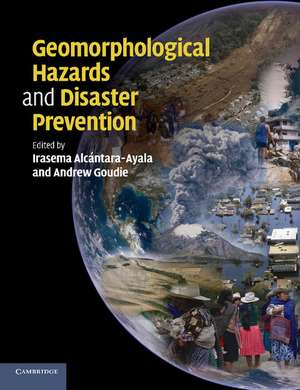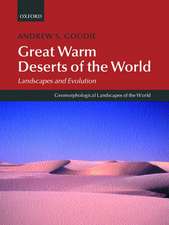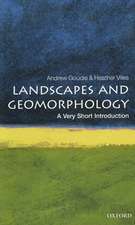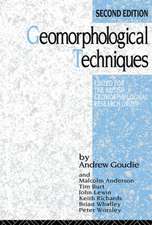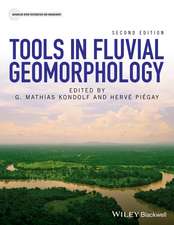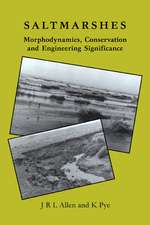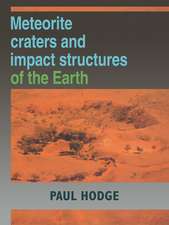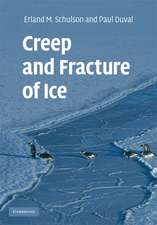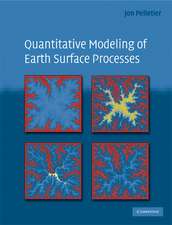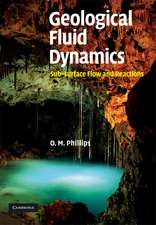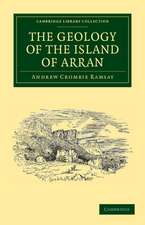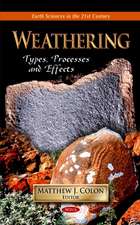Geomorphological Hazards and Disaster Prevention
Editat de Irasema Alcántara-Ayala, Andrew S. Goudieen Limba Engleză Paperback – 9 iul 2014
| Toate formatele și edițiile | Preț | Express |
|---|---|---|
| Paperback (1) | 461.03 lei 6-8 săpt. | |
| Cambridge University Press – 9 iul 2014 | 461.03 lei 6-8 săpt. | |
| Hardback (1) | 706.45 lei 6-8 săpt. | |
| Cambridge University Press – 3 mar 2010 | 706.45 lei 6-8 săpt. |
Preț: 461.03 lei
Nou
Puncte Express: 692
Preț estimativ în valută:
88.21€ • 92.60$ • 73.22£
88.21€ • 92.60$ • 73.22£
Carte tipărită la comandă
Livrare economică 10-24 aprilie
Preluare comenzi: 021 569.72.76
Specificații
ISBN-13: 9781107414785
ISBN-10: 1107414784
Pagini: 304
Dimensiuni: 189 x 246 x 16 mm
Greutate: 0.54 kg
Editura: Cambridge University Press
Colecția Cambridge University Press
Locul publicării:New York, United States
ISBN-10: 1107414784
Pagini: 304
Dimensiuni: 189 x 246 x 16 mm
Greutate: 0.54 kg
Editura: Cambridge University Press
Colecția Cambridge University Press
Locul publicării:New York, United States
Cuprins
List of contributors; 1. Introduction Andrew S. Goudie; Part I. Processes: 2. Regional seismic shaking hazards in mountains William B. Bull; 3. Volcanic hazards and risks: a geomorphic perspective Jean-Claude Thouret; 4. Mountain hazards Olav Slaymaker; 5. Review and future challenges in snow avalanche risk analysis Michael Bruendl, Perry Bartelt, Margreth Keiler and Thomas Glade; 6. Landslide hazards David Petley; 7. Catastrophic landslides and sedimentary budgets Monique Fort, Etienne Cossart and Gilles Arnaud-Fassetta; 8. Landslides and climactic change Lisa Borgatti and Mauro Soldati; 9. The hazardness of high-magnitude floods Avijit Gupta; 10. Flood hazards: the context of fluvial geomorphology Gerardo Benito and Paul F. Hudson; 11. Geomorphology and coastal hazards Harley Jesse Walker and Molly McGraw; 12. Weathering hazards Andrew S. Goudie and Heather Viles; 13. Hazards associated to Karst Francisco Gutiérrez; 14. Soil erosion Andrew S. Goudie and John Boardman; 15. Desertification and land degradation in arid and semi-arid regions Yang Xiaoping; 16. Dune migration and encroachment Andrew S. Goudie; Part II. Processes and Applications of Geomorphology to Risk Assessment and Management: 17. GIS for the assessment of risk from geomorphological hazards Cees J. van Westen; 18. Hazards assessment for risk analysis and risk management Michael Crozier and Thomas Glade; 19. Vulnerability analysis in geomorphic risk assessment Gabi Hufschmidt and Thomas Glade; 20. Geomorphological hazards and global climate change Andrew S. Goudie; 21. Geomorphic hazards and sustainable development David Higgitt; 22. Geomorphology and disaster prevention Irasema Alcántara-Ayala; 23. Concluding remarks: geomorphology and the international agenda Irasema Alcántara-Ayala; Index.
Recenzii
'… surely one of the most relevant and timely Earth science texts for the early 21st century given the rapidity of current global climate change and predicted increase in associated natural disasters and infrastructural consequences. This comprehensive text on hazards brings fresh relevance and application to geomorphology and is an essential read for environmental consultants, land managers and scholars in Earth and environmental science.' Professor Stefan Grab, University of the Witwatersrand
'This book provides a comprehensive guide to the role of geomorphology in hazard and risk analysis. It presents an excellent and wide-ranging review of hazards and how society can respond and attempt to manage them … It brings together an impressive group of authors with international reputations in their various fields of geomorphological research.' Professor Tim Burt, Durham University
'… excellent exposition and state-of-the-art analyses of geomorphic hazards for better understanding and prevention of disasters. Alcántara-Ayala and Goudie are to be commended for their selection of topics and choice of so many prominent geoscientists to contribute chapters. Their book sets a high standard in focused analysis of diverse geomorphic hazards.' Professor John (Jack) Shroder, University of Nebraska at Omaha
'Brings together a broad range of research in a well written, comprehensively illustrated and accessible format, covering all of the major events that threaten human activity and life. An excellent synthesis for geomorphologists, the wider Earth Science community, engineers, planners and other decision makers.' Professor Robert J. Allison, University of Sussex
'An international team of geomorphologists have contributed their expertise to this volume, making this a scientifically rigorous work for a wide audience of geomorphologists and other Earth scientists.' The Eggs
'The potential of geomorphology to identify and prevent different types of natural hazards is shown in this state-of-the-art volume, written by nearly 30 scientists from 13 countries … Since the book is attractively priced, it is definitely a recommended purchase for anyone interested in surface processes and their practical aspects.' Piotr Migoń, Geologos
'This is a timely book, as population pressures and the impacts of climate change look set to increase the frequency and severity of disasters. … Another theme of this book is the need to better understand vulnerability and to incorporate it into the disaster risk reduction process. … The second part of the book highlights the key role that geography can play in providing expertise, methodologies, research and training in both geomorphology and human geography, as well as a shared forum for discussion and the development of better approaches to disaster risk reduction.' The Geographical Journal
'This book provides a comprehensive guide to the role of geomorphology in hazard and risk analysis. It presents an excellent and wide-ranging review of hazards and how society can respond and attempt to manage them … It brings together an impressive group of authors with international reputations in their various fields of geomorphological research.' Professor Tim Burt, Durham University
'… excellent exposition and state-of-the-art analyses of geomorphic hazards for better understanding and prevention of disasters. Alcántara-Ayala and Goudie are to be commended for their selection of topics and choice of so many prominent geoscientists to contribute chapters. Their book sets a high standard in focused analysis of diverse geomorphic hazards.' Professor John (Jack) Shroder, University of Nebraska at Omaha
'Brings together a broad range of research in a well written, comprehensively illustrated and accessible format, covering all of the major events that threaten human activity and life. An excellent synthesis for geomorphologists, the wider Earth Science community, engineers, planners and other decision makers.' Professor Robert J. Allison, University of Sussex
'An international team of geomorphologists have contributed their expertise to this volume, making this a scientifically rigorous work for a wide audience of geomorphologists and other Earth scientists.' The Eggs
'The potential of geomorphology to identify and prevent different types of natural hazards is shown in this state-of-the-art volume, written by nearly 30 scientists from 13 countries … Since the book is attractively priced, it is definitely a recommended purchase for anyone interested in surface processes and their practical aspects.' Piotr Migoń, Geologos
'This is a timely book, as population pressures and the impacts of climate change look set to increase the frequency and severity of disasters. … Another theme of this book is the need to better understand vulnerability and to incorporate it into the disaster risk reduction process. … The second part of the book highlights the key role that geography can play in providing expertise, methodologies, research and training in both geomorphology and human geography, as well as a shared forum for discussion and the development of better approaches to disaster risk reduction.' The Geographical Journal
Descriere
A state-of-the-art assessment of how geomorphology contributes to the comprehension, mapping and modelling of hazardous Earth surface processes.
